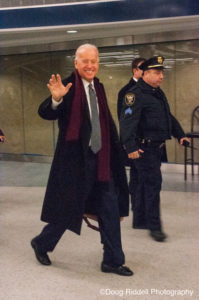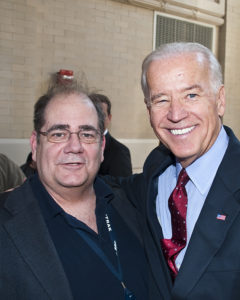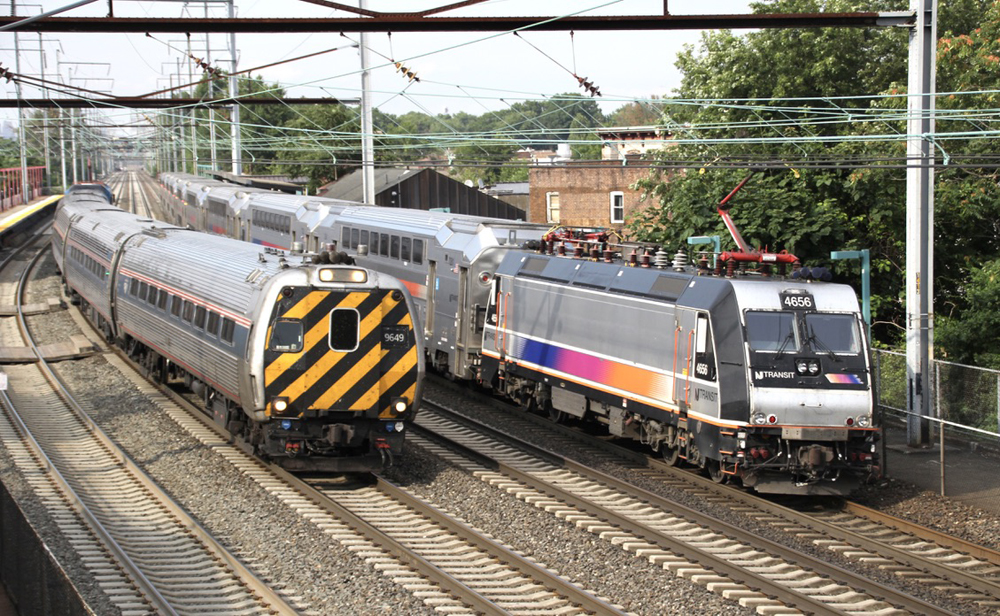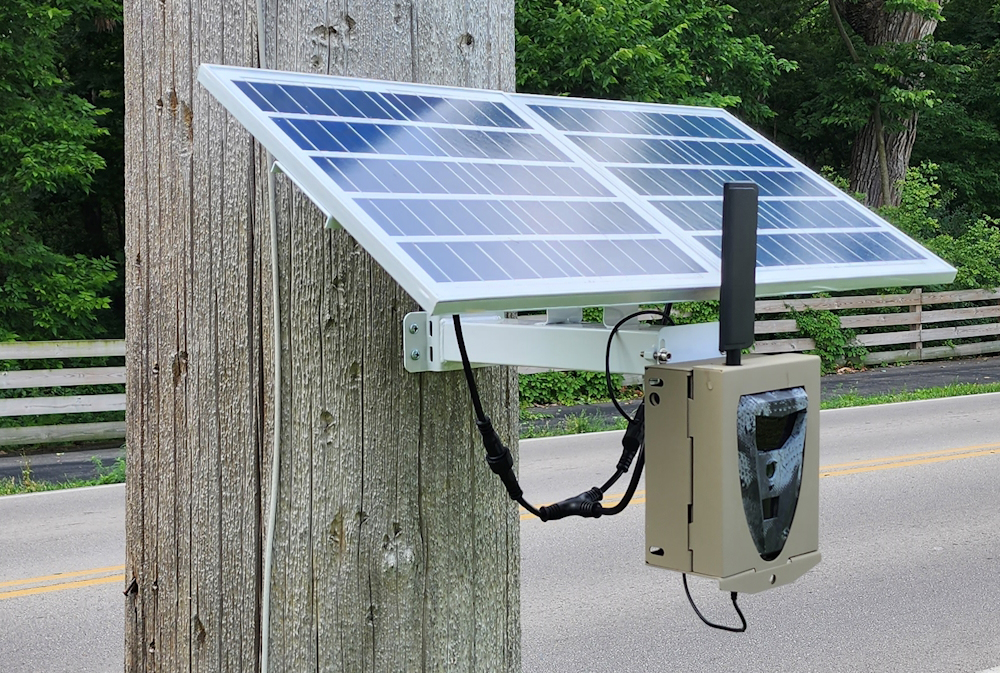
[Doug Riddell]
Delaying the 5 p.m. Metroliner or Acela Express by a minute or two didn’t happen often during Joseph R. Biden Jr.’s 36-year tenure as a U.S. Senator from Delaware, but personnel manning the gates at Washington Union Station learned to always be on the lookout for a swiftly moving figure bounding their way “just in case.”
So it was no surprise that the Vice President-elect tapped a longtime traveling companion, Amtrak Conductor Gregg Weaver, to formally introduce “Amtrak Joe” to the throng of well-wishers assembled at the public send-off rally for the inaugural special of Biden and President-elect Barack Obama at Wilmington, Del., in January 2009.
Many voters poised for a decision in the upcoming Presidential election know Biden began a 90-minute daily commute in early 1973 to be home every night for his two young sons, Hunter and Beau, after they were injured in an automobile accident that killed his wife and daughter just before Christmas.
Though many observers, and even his own staffers, didn’t think Biden could possibly survive the grind for one Senate term — let alone six — he used the daily round-trips as productive work time, listening to concerns expressed in both overheard conversations and direct contact with constituents who approached him, and getting to know the operating and on-board service personnel that ran the trains.
“He knew enough about the railroad to tell an NBC-TV journalist who was about to ride the cab of his Metroliner’s AEM-7 to New York, to, ‘watch out for that sharp curve at Elizabeth, N.J. If they were able to straighten that out, we wouldn’t have to slow down so much,’” recalls now-retired Amtrak media spokesman Cliff Black.
At a time before safety rules would prohibit ad hoc visits to locomotives, former Amtrak engineer Doug Riddell tells Trains News Wire, engineers Rich del Bono and Mike Warren separately invited Biden to ride with them — and in one case the U.S. Senator was clearly excited to sit in the operator’s seat with his hand on the throttle.
Riddell, a noted author who became Amtrak’s company photographer after leaving the operating ranks, was able to observe firsthand the camaraderie Biden had established not only with employees but people he encountered every day.
In Wilmington for several days in 2011 to document the dedication of the newly renovated Joseph R. Biden Jr. Transportation Center, Riddell remembers then-Vice President Biden rushing in a side door — as was his custom—with a Secret Service detail closely following, only to stop and visit with an elderly woman sitting on a station bench.

Biden earned his “Amtrak Joe” moniker because he has been one of the company’s few elected-official champions to vocally express support for its transportation mission.
Black is certain the railroad knowledge he absorbed from rank-and-file employees helped guarantee that Amtrak would obtain dedicated funds for locomotive and rolling stock rehabilitation in President Obama’s 2009 economic stimulus package.
“That money provided jobs for the blue-collar people he knows,” says Black, adding, “his support helped reinforce Amtrak’s Delaware commitment to the Consolidated National Operations Center, the Wilmington shops, and the Bear Heavy Maintenance Facility.” Both as Senator and Vice President, Biden tirelessly pushed for sufficient Amtrak funding when virtually all heads of the Executive, regardless of party, ranged from lukewarm backing to vows to “zero out” rail passenger service.
Significantly, although Biden’s rail travels seldom occurred outside the Northeast Corridor, he rode more trains and gained far more nuts-and-bolts knowledge about Amtrak than any of its CEOs and virtually all of its non-operating top executives.
As a Presidential candidate, Biden has made it clear that jobs and infrastructure enhancement are at the top of his “to do” list. Yet he hasn’t tipped his hand on what that means for Amtrak’s current management’s de-emphasis of national network revenue and future growth during the current pandemic, when Northeast Corridor and state-supported operations have been hit with the steepest ridership declines.
One thing seems certain: Biden’s from-the-ground-up experience regularly riding trains for the last five decades means Amtrak’s plight won’t be ignored if he is elected.













